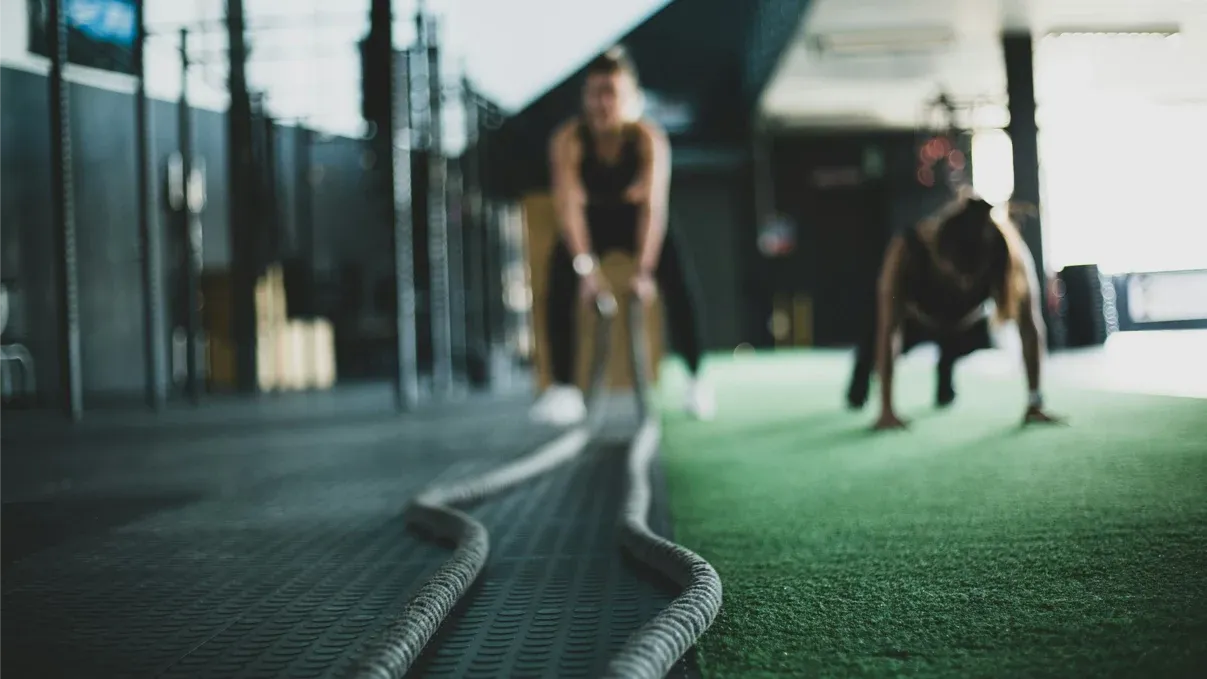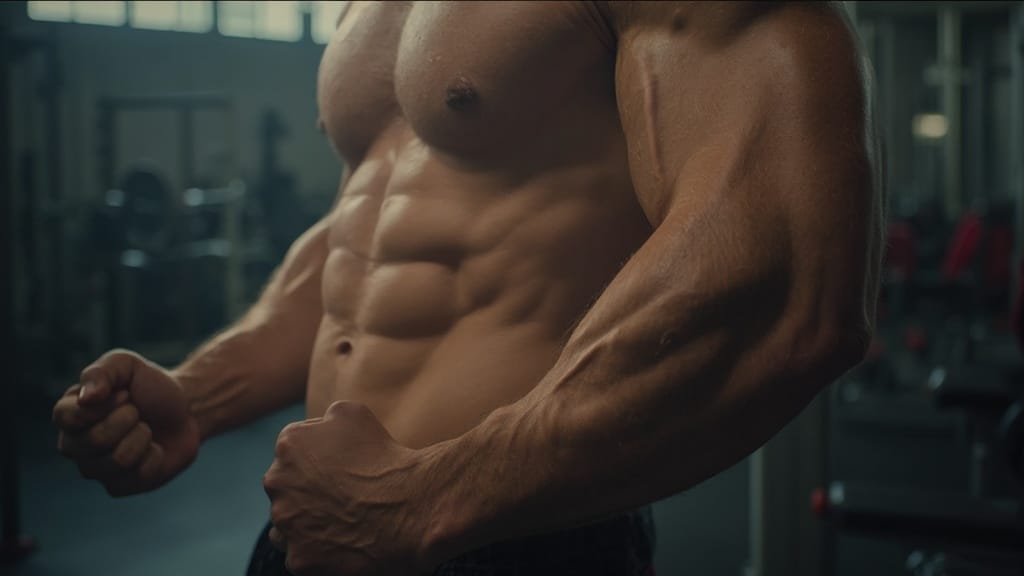Cutting after bulking is common among bodybuilders and gym-goers, but it can lead to muscle loss. What you can do is you can purposely gain weight (usually muscle) to increase your strength when you bulk. Instead, however, you reduce your calorie intake and lose weight when you cut. Unfortunately, while this may help you achieve a leaner physique, it can also lead to the loss of hard-earned muscle mass.
The problem with cutting after bulking is that it creates a catabolic environment in the body. This means that the body breaks down muscle tissue to use for energy. To prevent this, you need to eat enough protein and do resistance training. Otherwise, you run the risk of losing all the progress you made during your bulk.
While cutting after bulking may be widespread, it is not without risks. If not done correctly, it can lead to muscle loss. So, if you are thinking about cutting after bulking, this blog post will make sure that you do it the right way to avoid any negative consequences.
What Are Bulking And Cutting Phases?
The terms “bulking” and “cutting” are often used interchangeably in the fitness world, but they are two different things. Bulking is purposely gaining weight to increase muscle mass and strength. This is usually done by eating more calories than you burn off and lifting heavyweights. On the other hand, cutting means losing weight to achieve a lean physique. This is usually done by reducing your calorie intake and doing more cardio.
While bulking and cutting are two different things, they are often done together in what is known as a “bulking and cutting cycle.” This is where you bulk for a few months and then cut for a few months. This idea is that you can build more muscle when you are in a calorie surplus (bulking) and then lose the fat when you are in a calorie deficit (cutting).
However, there is a problem with this approach. When you bulk, you will inevitably gain some fat. This is because it is tough to gain muscle without gaining some fat. And, when you go from a bulk to a cut, you will lose some of the muscle you just gained. So, in the end, you may not end up looking any better than you did before you started bulking and cutting.
This is why many people are now adopting a “lean bulking” approach. This is where you bulk, but you do it in a way that minimizes fat gain. This can be done by eating just enough calories to support muscle growth and doing more cardio. Then, when you cut, you will have less fat to lose, and you will be able to preserve most of the muscle that you built.
Why Should You Cut After Bulking?
There are a few reasons why you might want to cut after bulking. Firstly, if you have been bulking for a long time, you may have gained a lot of fat. This can make you feel self-conscious, and it can also lead to health problems. Cutting will help you lose this excess fat and get back to a healthy weight.
Secondly, if you are getting ready for a competition or photoshoot, you will need to eliminate excess fat. This is because muscle definition is more visible when there is less body fat. So again, cutting will help you to achieve this leaner physique.
Finally, if you are not happy with your look, the cutting may be the best way to change your appearance. This is because, when you bulk, you will inevitably gain some fat. So, if you are not happy with your current physique, then cutting may be the best way to change it.
Common Challenge When Cutting After Bulking
One of the biggest challenges when cutting after bulking is that you may lose some of the muscle you just gained, and when you are in a calorie deficit, your body will start to break down muscle tissue for energy. To prevent this, you need to ensure that you eat enough protein and do enough weightlifting.
Another challenge when cutting after bulking is that you may feel weak and tired. This is because your body is used to having a lot of calories, so it can be hard to adjust to a lower calorie intake. To overcome this, you need to eat enough healthy fats and get enough sleep.
Tips For Cutting After Bulking
There are a few things that you can do to make cutting after bulking easier. Firstly, you need to make sure that you are gradually reducing your calorie intake. If you reduce your calories too much, you will lose. Make sure that you are getting enough sleep and eating nutritious foods. Another tip is to make sure that you are doing enough cardio. Cardio will help you burn more calories, and it will also help you keep your heart healthy.
Finally, make sure that you are staying motivated. This can be difficult when you cut, as you may not see the results immediately. However, if you stick to it, you will eventually get there. Remember, slow and steady wins the race!
How To Cut After Bulking: The Ultimate Guide
If you want to cut after bulking, there are a few things that you need to do to avoid losing muscle. These are the steps that you need to take to cut after bulking the right way and avoid losing muscle mass:
- Determine your current Total Daily Energy Expenditure (TDEE)
To lose weight but still have that muscle mass, you need to create a caloric deficit, which means eating fewer calories than you expend in a day. You need to know your Total Daily Energy Expenditure (TDEE) to do this. This is the number of calories you burn in a day, and it’s determined by your age, weight, height, and activity level.
There are a few different ways to calculate your TDEE, but the most accurate way is to use a fitness tracker like a Fitbit or Apple Watch. These devices will track your steps, heart rate, and other metrics to give you an accurate estimate of how many calories you’re burning in a day.
Once you know your TDEE, you can adjust your diet and exercise routine to create the caloric deficit needed for weight loss. For example, if your TDEE is 2,000 calories and you want to lose one pound per week, you need to consume 1,500 calories per day. This can be achieved by reducing your calorie intake by 500 calories per day or burning an extra 500 calories through exercise.
- Gradually decrease your calorie intake
Whether you’re trying to cut fat or bulk up, your diet will be a critical factor in your success. And when it comes to making dietary changes, gradually is usually the best approach. For example, if you’re cutting after a period of bulking, it’s important to slowly decrease your calorie intake rather than making drastic changes all at once.
Cutting calories too quickly can decrease energy levels and muscle mass, the opposite of what you’re trying to achieve. So instead, aim to reduce your calorie intake by 10-15% each week. This may seem like a slow process, but it will give your body time to adjust and will help you retain your hard-earned muscle mass. Plus, it’s a lot easier (and more sustainable) to make small changes than completely overhaul your diet overnight. So, if you’re looking to lean down after a bulk, take things slow and steady for the best results.
- Lose weight at an Optimal Rate
You’ve done it. You’ve created a calorie deficit, ready to shed pounds. But how fast should you expect the weight to come off? While there is no one-size-fits-all answer to this question, there are general guidelines that can help you gauge whether you’re on track to reach your goals. First, it’s important to remember that weight loss occurs when you burn more calories than you consume. So, the rate at which you lose weight will depend on how large your calorie deficit is. If you’re eating 500 fewer calories each day than your body needs, you can expect to lose about 1 pound per week. If you’re eating 1000 fewer calories, you should lose about 2 pounds per week. Of course, these are just estimates; your actual weight loss may be higher or lower depending on factors like your activity level and metabolism. But if you’re sticking to your calorie deficit and not seeing the results you want, it’s possible that you need to make some adjustments. Try increasing your activity level or slightly reducing your calorie intake until you find the sweet spot for weight loss. And remember, even a slow and steady weight loss can lead to significant results over time. This may not seem too drastic, but it’s a sustainable rate of weight loss that will help you keep your muscle mass.
- Make an Estimate of Your Macros for a Cutting Period
Cutting is a phase where you eat in a slight calorie deficit to lose body fat. Unfortunately, many people find that their weight loss stalls after a certain point, and they cannot lose those last few pounds of stubborn fat. This is where calculating your macros can come in handy. By knowing how many grams of protein, carbs, and fat you should be eating per day, you can better tailor your diet to your individual needs and see results again. For example, you will want to eat slightly fewer carbs and more protein than when bulking when cutting. This is because carbs can cause an increase in insulin levels, which can promote fat storage. On the other hand, protein helps preserve muscle mass and can even help boost metabolism. So, if you are stuck at a weight-loss plateau, try calculating your macros and fine-tuning your diet for better results.
- Make a diet plan that you can stick to
Now that you’ve built up a solid foundation of muscle mass, it’s time to start cutting down and getting shredded for summer. But, just as with bulking, you can’t just wing it when it comes to your diet. You need to have a plan to know precisely what you need to eat and when you need to eat it. Cutting is all about creating a calorie deficit, which means you need to be in control of your food intake. To do this effectively, you need to track your macros and make sure that you’re eating just enough to support your workouts and recovery, but not so much that you start putting on fat again. This can be a tricky balance to strike, but once you get the hang of it, you’ll be able to dial in your diet perfectly. When cutting, another thing to keep in mind is that your nutrient needs will change. Since you’ll be eating less food overall, you need to ensure that your food is packed with nutrients. This means plenty of lean protein, healthy fats, and nutrient-rich carbs.
- Keep track of your calories and macronutrients using this easy-to-use tool
If you’re like me, you love to bulk. I mean, what’s not to love? You get to eat all the food and lift weights, and your gains are through the roof. But then comes the dreaded cutting phase. Suddenly you’re eating less food and doing more cardio, and it feels like all your hard work will waste. But it doesn’t have to be that way! With a little bit of planning and the right tools, cutting can be as fun and effective as bulking.
One of the most important things to do when cutting is to track your calories and macronutrients. This can be a daunting task, but there are plenty of great tools to help you. My personal favorite is MyFitnessPal. It’s an app that easily tracks everything you eat, drink, and exercise. And it’s free! So there’s no excuse not to use it.
Another excellent tool for cutting is a food scale. This will let you ensure you’re getting enough food without overeating. And speaking of overeating, another helpful tip is to measure your food before eating it. Then, you’ll know exactly how much you’re eating, and you won’t be tempted to overeat.
- Optimize Your Diet Before and After Exercise
Bulking up and adding muscle mass is no easy feat. It requires dedication to your workout routine and focusing on eating foods that will help you bulk up without adding too much fat. Once you’ve achieved your desired level of muscle mass, it’s time to cut back on the calories and start working towards a leaner physique. When you’re cutting after bulking, paying attention to your pre and post-workout nutrition can make a big difference in losing fat while preserving muscle. Here are a few things to keep in mind:
– Make sure you’re getting enough protein. Protein is essential for muscle growth, so you want to ensure you’re getting enough of it. Aim for at least 0.8 grams of protein per pound of body weight.
– Don’t skimp on the carbs. Carbs are your body’s primary energy source, so you need to ensure you’re getting enough of them. Just choose complex carbs like sweet potatoes and oats rather than simple carbs like candy and cake.
– Get in some healthy fats. Healthy fats are essential for hormone production and maintaining a healthy metabolism. Aim for at least 0.5 grams of healthy fats per pound.
You can lose fat while preserving muscle by paying attention to your pre-and post-workout nutrition. Just be sure to get enough protein, carbs, and healthy fats.
- Weight training to Maintain or Increase Muscle Mass
Many people think that to bulk up and build muscle, you have to eat many calories. And while it’s true that you need to consume more energy than you expend to grow muscle, it doesn’t mean that you have to go overboard and eat everything in sight. If you want to maintain your muscle mass while cutting down on body fat, you’ll need weight training. When you lift weights, you’re essentially breaking down your muscles and then allowing them to rebuild more robust than before. This process requires energy, so your body will need to tap into its fat stores for fuel. As a result, weight training is an effective way to help you maintain or even gain muscle while dieting. Just be sure to listen to your body and give it the rest it needs to recover properly. Otherwise, you run the risk of overtraining and injuring yourself.
- Keep a workout log to track your progress
If you’re like me, you love the feeling of being big and strong. There’s nothing like the pump after a heavy set of squats or deadlifts. But sometimes, you need to cut back. Maybe you’ve put on a few too many pounds, and you’re starting to feel sluggish, or maybe you’re just ready for a change. Whatever the reason, cutting can be a great way to get leaner and more shredded. But it’s also essential to track your progress in the gym to see how far you’ve come. Here are a few tips for tracking your progress when cutting after bulking.
First, make sure to keep a training journal. This is essential for seeing how your body responds to different exercises and weightlifting programs. Plus, it’s a great way to motivate yourself to keep pushing forward. Simply seeing the gains, you’ve made over time can be very motivating.
Second, take before and after photos. This is probably the best way to track your physical progress. It’s incredible how much your body can change in just a few weeks or months, so take advantage of this by taking photos at regular intervals. Seeing the physical changes in your body will help keep you motivated to continue.
- Taking a cardio session may be beneficial
When you’re trying to cut after bulking, it’s essential to focus on lifting heavy weights and eating many calories. However, some people find that they start to look a little fluffy after a few months of bulking. If this happens to you, don’t despair – there’s an easy fix. Just incorporate some cardio into your routine. A little bit of cardio will help you shed any excess fat while still allowing you to retain your hard-earned muscle. And it doesn’t have to be anything too intense – a moderate amount of cardio 3-4 times per week should do the trick. So if you’re looking to get ripped, don’t forget to add some cardio to your workout routine.
- Give yourself a break from Caloric Deficit
If you’re trying to lose fat after bulking, it’s essential to come out of the deficit. This allows your body to refeed and resupply itself with the nutrients it needs to function optimally. It also helps prevent weight loss plateaus and preserve muscle mass while in a calorie deficit. So how often should you come out of deficit? Once every 7-10 days is an excellent general guideline. This will ensure that you’re getting enough calories and nutrients to support your training and recovery without going overboard and undoing all your hard work. After that, watch your portion sizes and body composition to avoid gaining too much fat. And, of course, listen to your body and adjust as needed based on how you feel. There’s no one-size-fits-all answer at the end of the day, but following these guidelines should help you find the sweet spot for YOUR body.
- Consider Taking Supplements
After working hard to bulk up, the next phase is the cut after bulking phase. When you work to shed excess body fat, reveal your hard-earned muscles, and get ripped. Reaching your cutting goals requires significant diet and lifestyle changes. One necessary change is to ensure you’re getting all the nutrients your body needs by taking supplements. Here are some of the essential supplements to take when cutting.
First, omega-3 fatty acids are essential for maintaining muscle mass while shedding body fat. Second, omega-3s help reduces inflammation, leading to muscle loss during a severe calorie deficit. Third, they also help preserve muscle glycogen stores, preventing fatigue during intense workouts. Fish oil is an excellent source of omega-3s, but you can also take supplements.
Second, vitamin D is another essential nutrient for cutting. Vitamin D helps regulate calcium levels, which are essential for maintaining strong bones and preventing injuries. It also boosts testosterone levels, which can help you retain muscle mass while cutting calories. You can get vitamin D from sunlight or supplements.
Finally, protein is essential for preserving muscle mass while cutting calories. Aim to consume at least 1 gram of protein per body weight. If you’re having trouble meeting your protein needs from diet alone, consider taking supplements. Whey protein is an excellent option for post-workout recovery, and casein protein is ideal before bedtime.













